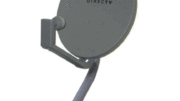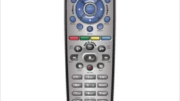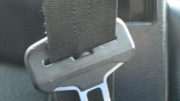Think back in your mind those wonderful days of 2006. The device you see above you, the B-Band converter, was standard equipment for HD receivers and DVRs back in those days. We still sell them at Solid Signal, although today’s buyer is more likely to use it for ham radio (more on that later.) Should you use it for a commercial installation?
What a B-Band Converter does
First thing you need to know is that sometimes, we’ll refer to frequency ranges by letter. This practice goes back to the World War days. Back then, confusing the Germans was a priority, so the letters were sort of randomly assigned. You don’t need to know all of them to understand what we’re talking about, just two really.
The L Band
Technically, L-band refers to the range from 1,000-2,000 MHz. In satellite, we use it to refer to 950-2150MHz, which is pretty close. With the exception of DIRECTV’s HD and 4K satellites, all satellite signals travel down a wire using the L band. Satellite receivers have tuners that can receive it, and using other technologies like DiSeQc, receivers can communicate with dishes to know what signals to send.
The B Band
DIRECTV’s HD and 4K satellites at the 99 and 103 locations are put on the wire between 250 and 750MHz, which is known as the B band. This is done so that there can be more than two different types of signals on the line and this helps the receiver identify if it’s receiving the right signal.
Applications with a satellite receiver
When a DIRECTV receiver requests signals from the HD and 4K satellites, they are sent up the line using frequencies in the B Band. However, most DIRECTV receivers can’t tune the B Band. Only the long-defunct HR23 and H23 receivers can do this. So, a filter is used to convert the B-band signals into L-band signals so that the receiver can actually tune them. That filter is called… you guessed it… a B-Band Converter.
When to use a B-Band Converter use
Early satellite receivers used B-Band Converters to allow them to get those HD broadcasts. This was truly temporary. SWM multiswitches became standard within about 2 years of the launch of new HD satellites. With SWM, you do not need a B-Band Converter. SWM technology uses a much narrower range of frequencies and a completely different scheme to get signals where they want to be. SWM is superior in almost every way.
Ham radio operators still buy B-Band Converters. B-Band Converters, just by random chance, make it possible for older ham radios to tune frequencies beyond their original design standard. These parts work for this purpose quite well, surprisingly.
Should you use B-Band Converters in commercial settings?
The answer is, absolutely not. SWM multiswitches are the standard for commercial installs, 100% of the time. Using a non-SWM dish on the roof and SWM multiswitches makes for a more stable and stronger satellite signal. In areas where you need more distance than a SWM can provide (usually 175-200 foot cable runs), you should have a secondary equipment closet for that purpose. In many cases this can be a more expensive installation but it’s going to be more stable and reliable over time. It’s also going to be easier to repair.
Even if you are only putting up one or two receivers, B-Band Converters should not be used in commercial installs. They are fine for residential but really are the weak link in commercial setups. It’s just better to use SWM.





